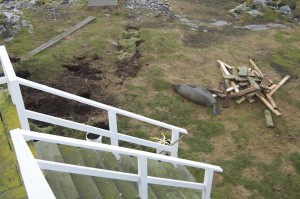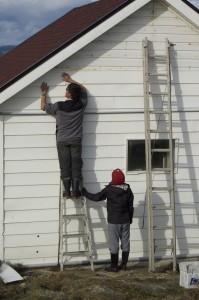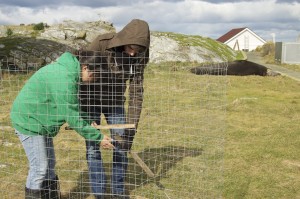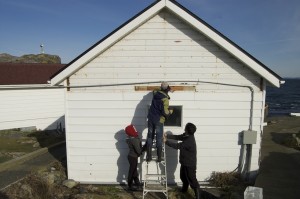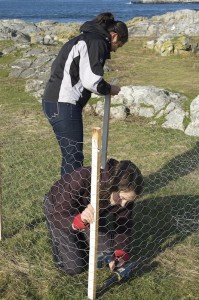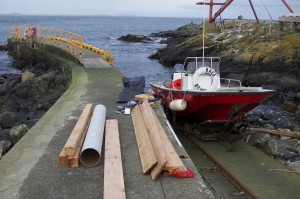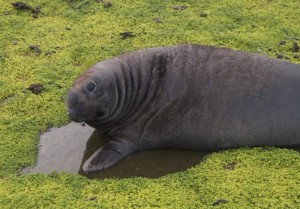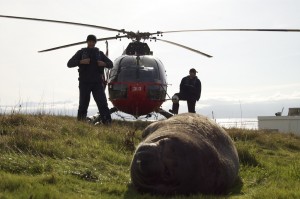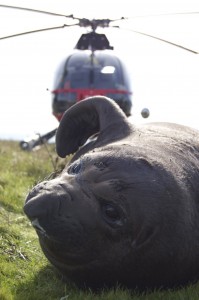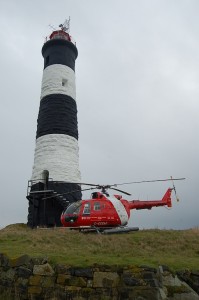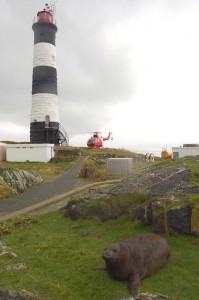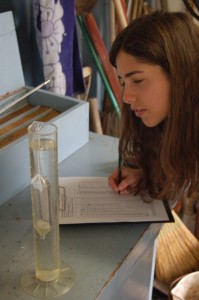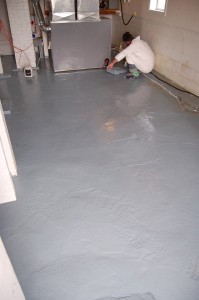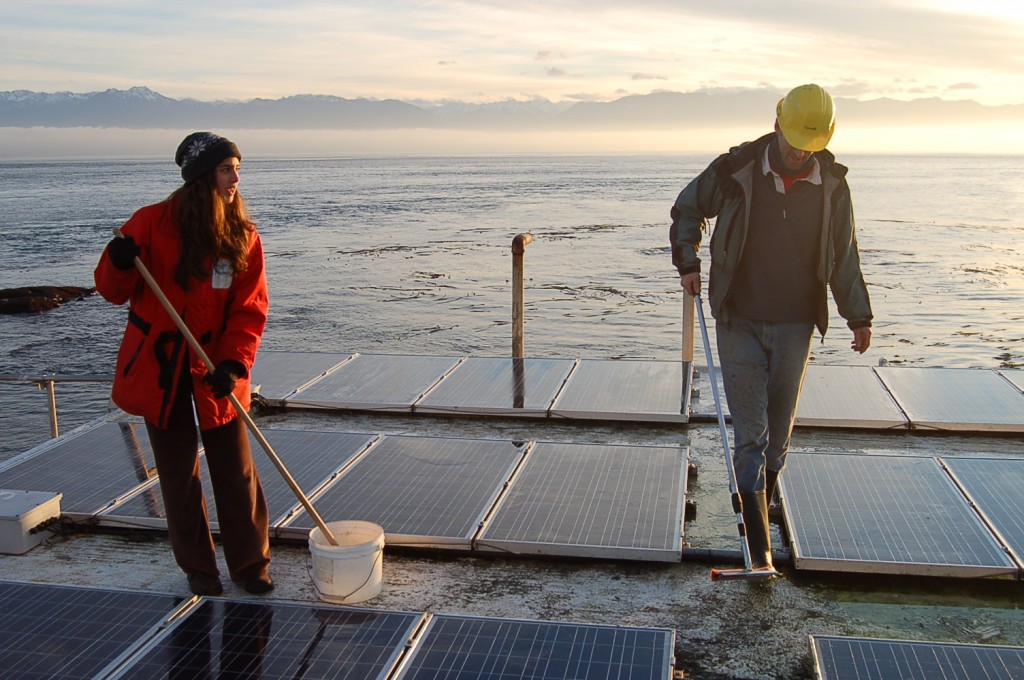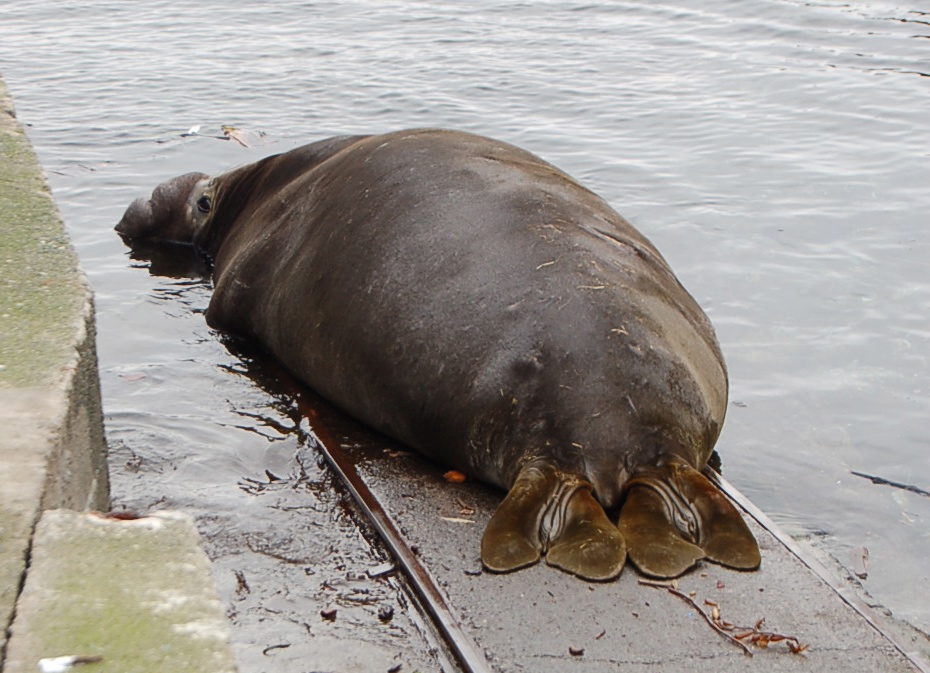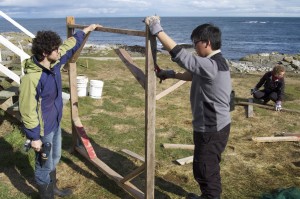 Squall decided to position herself right next to the tank room on Wednesday so we had to put a hold on the siding work. We moved over the the South side of the main house to work on deconstructing an old cache and started work on footings to build a new compost container.
Squall decided to position herself right next to the tank room on Wednesday so we had to put a hold on the siding work. We moved over the the South side of the main house to work on deconstructing an old cache and started work on footings to build a new compost container.
On Thursday Squall made her way around the NE side of the main house and came to rest right in the middle of our new work site. Thanks Squall, now that project is on hold. Fortunately the students did a good job of removing all the nails from the scrap wood, Squall was pretty interested in the 2×4’s.
So, it was back to the siding work yesterday. The students really took the lead on this project: removing the remaining panels, cleaning out rusted nails, replacing the panels that were lost, and putting the siding back up with stainless steel screws. Job well done!
We also put together a third goose exclosure yesterday on the lawn between the science centre and the energy building. Misery (in the background) has been relaxing near the science centre yesterday and today, keeping the students company.

